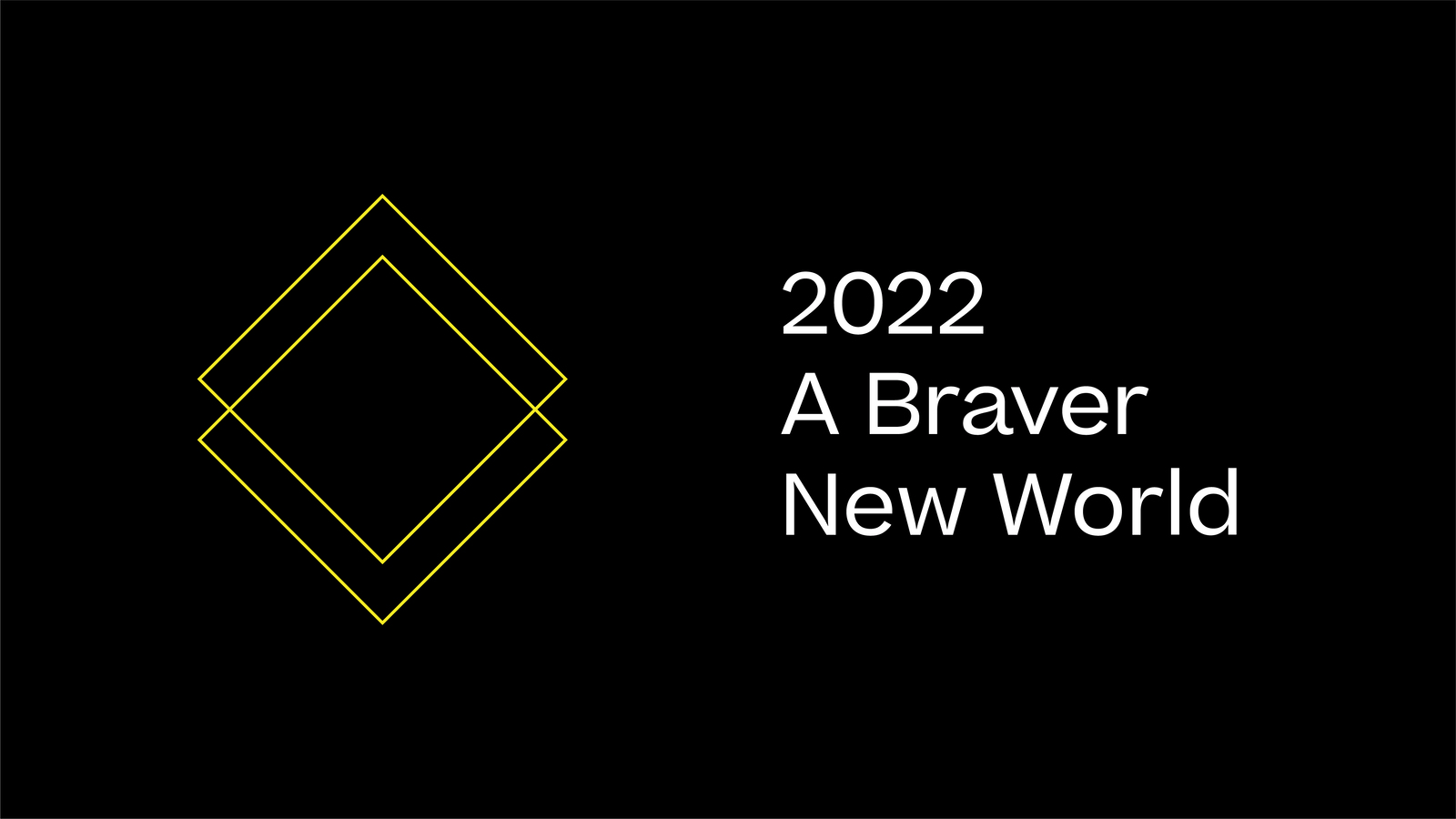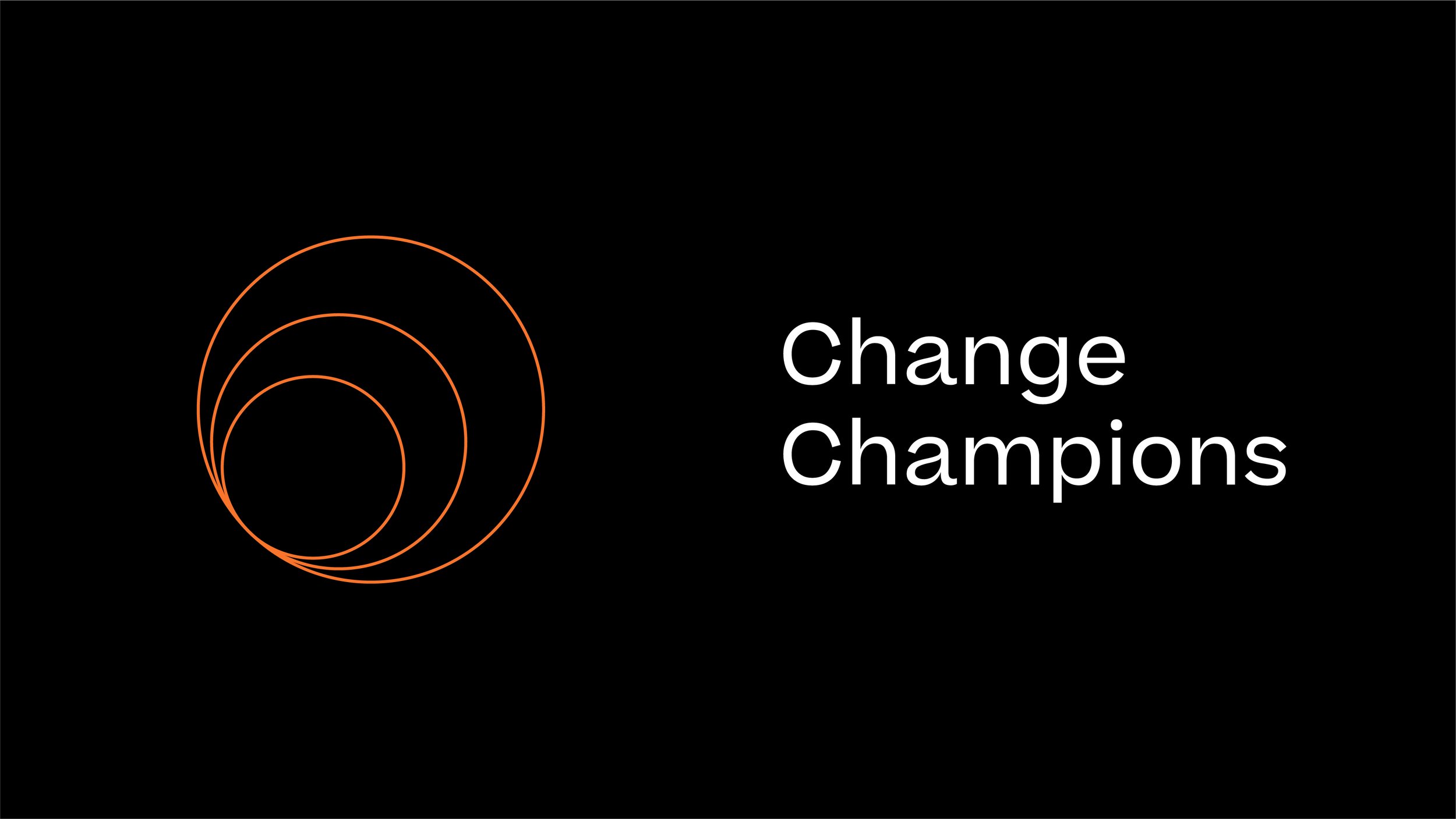2022 Trend Forecast: A Braver New World
It is time for a world where we are grounded in and nourished by nature; where we celebrate and unite in our unique differences. It is time for a world where we transcend the ordinary and are empowered to live our best life. It is time for joy and hope to outshine the tumultuous start to the new decade.
1. Change Champions
More than ever, brands have rallied together to champion changemaking alongside consumer and brand allies.“88% of global consumers believe companies and brands have a responsibility to take care of the planet and its people.” The notion of “coopetition” is the new benchmark that brands are setting in a bid to save the world where they unite in global, social and environmental missions. From leaders of macro change like Patagonia’s Action Works, Timberland’s regeneration program and Parley for the Oceans x Adidas, to leaders of a more focused set seen in H&M’s Role Models and Made Good’s Unwreck the Future; initiatives that propel youth to be change leaders in their communities. Other brands are taking part in product development to drive change like Tony’s Chocolonley’s Conversation Bars, Axiology Beauty’s zero waste lip-to-lid balm, Evian’s Evian’s aluminum-free barrier aseptic carton design and Plus’ waste-free body wash with dissolvable packaging.
Outside of product development, there has been a shift away from the CSR (Corporate Social Responsibility) model towards a focus on ESG (Environmental, Social, Governance) in order to properly assess risks and growth opportunities, while accurately measuring change. Another acronym floating in the blockchain ether are DAOs (decentralized autonomous organizations). As artists, charities, and businesses form their own to drive change, DAOs are becoming increasingly popular due to their democratic, global and transparent nature that addresses specific goals and problems to activate change.
When it comes to sustainability specifically, WGSN reports, the need for change has manifested in 3 consumer mindsets: democratic sustainability, active sustainability and outsourced sustainability. Democratic sustainability is supported by the value-driven consumer who values price point, accessibility and convenience in order to give them a sense of control. The active sustainability cohort is purpose-driven, channeling fears into hope and action through actively participating and changing behaviours. Those who value outsourced sustainability are less engaged than previous consumer cohorts due to their lack of trust in institutions and rejection of responsibility. Understanding these differing cohorts can help brands focus their efforts when speaking and selling to consumers.
Brand implications: How can brands help partner with consumers to empower and lead the change we all wish (and need) to see in the world?
2. Radical Inclusivity
During the pandemic, a mass awakening has occurred where people are seeking systemic change to represent the underrepresented through equality, accessibility, inclusion and empathy. Culture has shifted to demand radical reform beyond Instagram image carousel protests and cancel culture. While many brands have increased their focus on diversity and inclusion, some are mere performative acts that last a limited amount of time like special offers or community featuring during Black History Month or on International Women’s Day. Consumers are seeing through these marketing ploys, calling out brands to actively make change within their office culture, product development and advertising. They seek brands that represent and understand who they truly are. They want to feel seen, heard and appreciated. They want to see people like themselves in magazines, on tv and in the workforce.
“All-inclusive design isn’t a trend; it’s the norm,” Dieline reports. Inclusion is a foundational element that should be a key consideration in consumer-brand relations. While the product or service offering may be targeting a certain cohort, it’s important to encourage equal representation from ideation, to execution. Strong examples embodying these principles include the establishment of Diversity in Design Collaborative, braille holiday packaging by Purdy’s Chocolatier, LEGO’s LGBTQ+ “Everyone is Awesome” set, the world’s first adaptive deodorant by Degree, beauty products going beyond the binary, the need for the tech industry’s adoption of a more representative emoji set and an increased interest and adoption of attracting and retaining neurodivergent employees. At the end of the day it’s truly about empowering everybody to champion a culture of diversity, accessibility and inclusion today, for the greater good of our shared future tomorrow.
Brand Implications: How can brands increase empathy and ultimately shift attitudes and behaviours towards fostering an inclusive community of diverse members that thrive?
3. Hybrid Realities
As the future of work continues to evolve, we see an overlap of professional, personal and private realms. The definition of boundaries become more fluid, flexible and exciting for some, while confusing and overwhelming for others. As consumers combat the uncertainty of the future and change in day-to-day interaction or the lack of in-person social connection, the introduction of the Metaverse has generated excitement and anticipation of the future. From shopping to dining and socializing, the ‘meta’ moment is here. While some might see this network of 3D virtual worlds chaotic and a form of escapism, some find comfort in connection and inspiration in its universality as it integrates virtual and augmented reality. Big brands have hopped into this metaverse extension of reality, whether it’s nostalgia-driven or future-focused like Dunkaroos’ virtual and IRL merch, Coke Space, Pacsun’s The Game, Nikeland on Robolox or Facebook becoming Meta. An increased interest in parasocial relationships, where a one-sided psychological relationship is formed between a social media user and media persona, celebrity or influencer through media consumption. But these online relationships have also spread out into brand collaborations like Fortnight x KAWS, Charli Cohen x Pokemon, Roblox x VANS World and Louis Vuitton x LOL for experiences unlike anything seen before.
Brand Implications: How can brands create seamless integrations, memorable experiences and shape new ways of living in both physical and digital realms?
4. Optimized Simplicity
As our ever-evolving day-to-day lives increase in complexity, consumers are looking to create an optimized way of living to combat burn-out and hustle culture, and balance professional and personal spheres. According to US market intelligence company Market Research, the self-improvement market was worth $9.9bn in 2016 and is estimated to grow to $13.2bn by 2022 with 5.6% average yearly gains. From simplifying at-home spaces to in-store experience, it’s clear there is an immediate need for a more functional approach in our desynchronized society. From mindful bed making to Keurig for coffee and cocktails, striving for the simple life, enables more time for doing the things you love. WGSN categorizes this consumer cohort as the stabilizers craving simplified retail experiences, calm commerce and a reassuring relationship with brands. Their streamlined approach to living can be found in their hybrid living spaces catering to working, learning, playing and living, minimal approach to cooking, affinity for one-stop wellness shops, increased interest in functional-wellness beverages and food and minimalistic shopping experiences like Toronto’s experiential cannabis dispensary, Alchemy. A thoughtful and purposeful approach to living enables everyday optimizers order, clarity, simplicity, efficiency and comfort amidst chaos and uncertainty.
Brand Implications: How can brands utilize optimized simplicity to help support shifting consumer needs as we transition from pandemic living?
5. Naturally Nurtured
Countless studies have shown that the process of “earthing” or grounding oneself in nature has proven to be an effective form of healing. Seeking freedom and peace, we’ve seen a shift of increased adoption of natural remedies to free us from the confines of lockdown. From adding at-home vegetable gardens to leaving the city to hike, countless individuals have found comfort in connection with the outdoors to reroot. WGSN reports on the idea of rerooted nature as an “affirmation of the things that connect us – nature, heritage, craft and community” as guides during a time of rerouting to new paths. We see nature as a collective unifier and healer to ease our anxiety, uncertainty of the future and help ground ourselves. It has been proven that any interaction with nature is beneficial. A walk in the park, or even just looking out a window at some trees, decreases blood pressure, stress hormones and symptoms of anxiety and depression. There’s been a great adoption of calmtainment, where our self-care sanctuaries aid our connection of ourselves back to the world. The idea of wellness architects, spring renewed hope for the creation of spaces that foster wellbeing for both body, mind and spirit. Wellness guru, Deepak Chopra, has even created the ideal apartment in his New York abode featuring anti-microbial surfaces, Vitamin C-filtered showers, in-duct aromatherapy and individually-calibrated circadian lighting systems. While this may be too ambitious for the average consumer, we can borrow learnings to adapt our living spaces through nature-inspired color palettes, materials and textures to create calm, safe and healthy environments.
Brand Implications: How can brands draw inspiration from our symbiotic relationship with nature in way that unifies and heals?
6. Brave Optimism
Finding joy in the little things during times of uncertainty has led consumers to adopt a different perspective on life. They are looking to explore, experiment, play and create in order to discover what’s new and next, shaping a brighter future for themselves. While 2021 saw consumers talking and thinking about the changes they wanted to make as forecasters predicted the upcoming roaring 20s, in 2022 we will continue to see more actionable change. This redefined optimism can only continue to ignite a sense of renewed hope that feels brave and unexpected but essential for our new ways of living. WGSN reports an exciting new consumer mindset that belongs to “The New Optimists”, who have an appetite to embrace joy and celebration as a form of resilience. Even the Pantone Color of the Year, Veri Peri, exudes a “courageous presence encouraging personal inventiveness and creativity”. Culture’s confident adoption of seeking joy daily can be found in the release of Cinnamojis #Cinnaverse, explosion of indulgent nutritional spreads , limited edition mintspirational Tic Tacs, Thomas Jackson’s ethereal art or by dopamine dressing. Ultimately, brave optimism is about striving for a life worth living. A little grit and smile go a long way.
Brand Implications: How can brands enliven the lives of consumers through visual narratives, supportive language and unique experiences in a way that inspires and uplifts?
Looking at the trend predictions for 2022, we may begin to wonder if they are indicative of the real change people are implementing in their lives as they strive for more balanced, authentic and optimized living, or if these trends are informing the coping mechanisms we’ve adopted as a result of pandemic living. Only time will tell.








